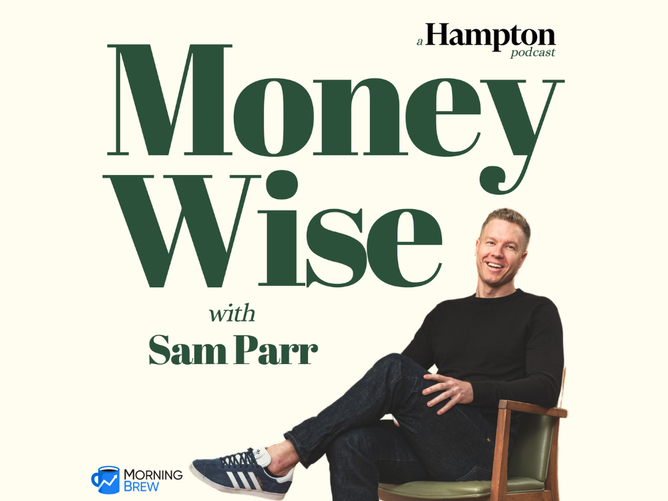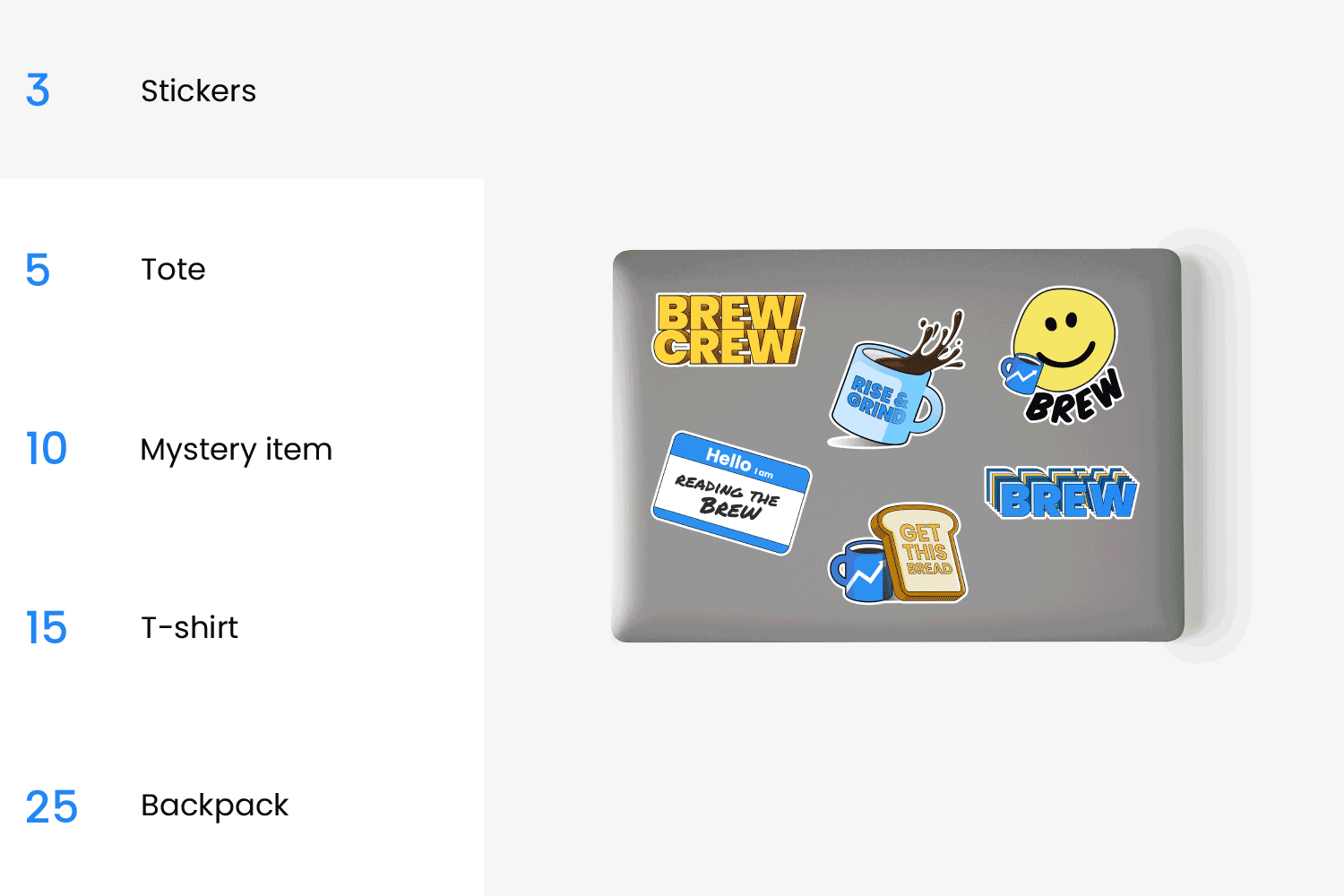|
It’s Tuesday. Talk about a false start: Venu Sports, the forthcoming joint sports streaming service from ESPN, Fox, and Warner Bros. Discovery, had its premiere date put on hold last week after a federal judge issued a preliminary injunction asserting that rival streamer Fubo is “likely to succeed on its claims…that [Venu] will substantially lessen competition and restrain trade in the relevant market.”
In today’s edition:
—Jasmine Sheena, Ryan Barwick
|
|
Oleg_ermak/Getty Images
|
Long gone are the days where toy manufacturers flock to Disney Channel or Cartoon Network to reach kids watching The Suite Life of Zack & Cody or Johnny Bravo. These days, the kiddos are all in on the streaming wars.
Consider Bluey, an Australian TV show that has found a passionate US audience on Disney+, and was the second most-watched series across all of streaming in 2023, according to Nielsen. Or take Cocomelon, the YouTube channel-turned children’s musical series, which now has eight seasons, notched nearly 200 million views in the second half of 2023, and was, like Bluey, among the top programs on streaming in 2023.
The shift to streaming means a changing of the guard for toy brands that have reached young eyeballs on traditional TV—and perhaps those of family members who actually buy household items and gifts. As most linear TV sees a decline, kids’ toy brands have shifted their advertising strategies to streaming, social, and YouTube to better seek out their target audiences.
“Over the last 50 to 70 years…you could do a single spot commercial for kids that would air on Saturday morning and then that would drive, essentially, your playground conversation,” said Josh Hackbarth, CMO of MGA Entertainment, which manufactures toys like Bratz dolls and Little Tikes products. “We of course have had to evolve on that messaging as not just methods have changed, but attention spans have gotten a little bit shorter as well.”
Continue reading here.—JS
|
|
|
Join My First Million host Sam Parr as he interviews high-net-worth guests on his brand-new podcast, MoneyWise. In each episode, Sam digs into the personal finances and lifestyles of his guests, getting radically transparent about things like burn rates, portfolios, and spending habits. Listen now and learn the financial secrets of some of the most successful entrepreneurs in the world.
|
|
Illustration: Anna Kim, Photo: Adobe Stock
|
Have a round. TikTok is now open to alcohol advertisers in the US.
The update, which went into effect in early June, allows alcohol and “alcohol branded merchandise” to be advertised to anyone 25 years old and above. The change comes as the heavily self-regulated alcohol industry—which spent roughly $1.7 billion in advertising in 2022, according to MediaRadar—has warmed to the platform.
Mixed feelings: Alcohol and social platforms have a mixed history. Since at least 2015, Meta has allowed alcohol ads so long as the ads aren’t targeted to people under the age of 21 in the United States, according to the company’s policies. However, in 2021, researchers were able to target kids between 13 and 17 years old with ads for cocktail recipes on both Instagram and Facebook, according to Consumer Reports. (Facebook later announced it would no longer allow ads for teens based on targeted interests.)
Previously, The Distilled Spirits Council of the United States (DISCUS) and the Beer Institute, the two groups that, among other things, help set the advertising best practices for the alcohol industry, have cautioned their members against even posting on platforms where there could be young audiences.
- Both the Beer Institute and DISCUS require their members (and the rest of the industry) to advertise where at least 73.8% of audiences are over the age of 21.
It was unclear whether TikTok had previously met the age criteria until late 2023, when a complaint was filed against the malt-beverage brand BeatBox over content the company had posted on TikTok.
Though BeatBox agreed to remove several videos—including one in which an influencer made JELL-O shots with BeatBox—it was able to prove that TikTok’s audience met the legal drinking-age threshold. The Beer Institute published its findings in March, though it hasn’t published an official stance on whether its members can join the platform.
DISCUS, however, updated its policy in May, effectively giving its members the clearance to post on the platform.
Read more here.—RB
|
|
Michael Loban
|
Each week, we spotlight Marketing Brew readers in our Coworking series. If you’d like to be featured, introduce yourself here.
Michael Loban is chief growth officer of InfoTrust, a digital analytics and data privacy consulting company. He has also served as an adjunct professor and as adjunct faculty at the University of Cincinnati and at Xavier University. He has been published in Forbes, Adweek, and CIO Magazine.
What’s your favorite ad campaign? My favorite campaign is, and likely will remain, Apple’s iPod launch campaign. I was relatively young when the product debuted, and digital marketing was very much in its infancy, but Apple’s “silhouette” campaign is an incredible example of using creativity and simplicity to launch a new category. It also stood the test of time and sold a lot of iPods.
One thing we can’t guess from your LinkedIn profile: I will accomplish my goal of running a marathon on every continent this year when I hopefully complete the Antarctic Ice Marathon in December.
What marketing trend are you most optimistic about? Least? The move toward advertisers using owned, first-party data is exciting. There’s a lot of buzz and chatter due to Google’s depreciation of third-party cookies, but I see significant opportunities for advertisers with this transition. As brands capture and utilize more of their own data, it will undoubtedly lead to more informed and impactful marketing decisions. Additionally, this is an important and necessary shift to respect consumer privacy and remain compliant with regulations.
As for the marketing trend I’m least optimistic about, it’s currently privacy concerns surrounding AI. Don’t get me wrong, AI will be transformative and provide a plethora of net positives to marketers. With that said, advertisers need to consider its risks and ensure proper protections are put in place before jumping head-first into using AI. Professionals and organizations in the industry are feeling the pressure to innovate, keep up and integrate AI into all processes and services, but we have to be strategic and cautious with the company and consumer data we are handing over to AI-powered tools.
Read more here.
|
|
Morning Brew
There are a lot of bad marketing tips out there. These aren’t those.
The fine print: How marketers can disclose AI use to their audiences.
Going live: Tips for using TikTok Live to boost reach and engagement.
On display: A guide to the latest strategies in display advertising.
Stream live: Catch the sold-out Marketing Brew Summit livestream for insights, networking, and tools to elevate your marketing game.
|
|
Francis Scialabba
|
Mergers and acquisitions, company partnerships, and more.
-
Skims tapped Miss Brat Summer herself, Charli XCX, for a new campaign.
-
Netflix is partnering with Google to make the new season of Emily in Paris shoppable.
-
Guinness rolled out its biggest global campaign to date tied to its Premier League sponsorship, which was announced in June.
-
Domino’s tapped Simon Cowell for its latest ad campaign.
-
Fiverr, the freelance marketplace, is running an ad that stars Martha Stewart working as an intern for the company.
|
|
|
Forget generic job searches. CollabWORK leverages the power of community to connect you with relevant opportunities in Slack channels, Discord servers, and newsletters like Marketing Brew. Land your dream job through the power of your network with CollabWORK.
|
|
ADVERTISE
//
CAREERS
//
SHOP
//
FAQ
Update your email preferences or unsubscribe
here.
View our privacy policy
here.
Copyright ©
2024
Morning Brew. All rights reserved.
22 W 19th St, 4th Floor, New York, NY 10011
|
|








